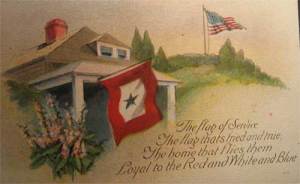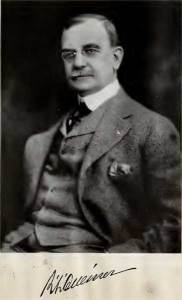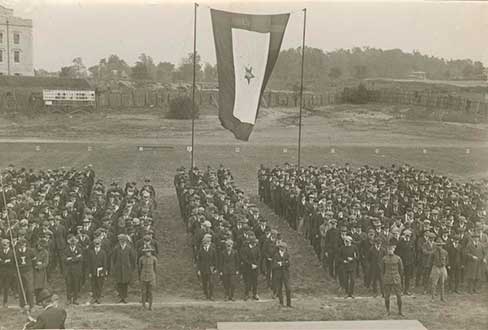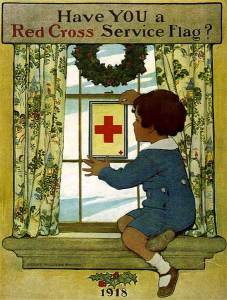Service flags honor family members

In July 1917, Mrs. Charles Signer of Olympia, Washington, did something involving a flag that was worthy of attention in the newspaper. But her action didn’t include the American flag. Rather, it focused on a flag that was brand new to the world.
“First Service Flag Will Be Hoisted in Olympia” read the headline. Mrs. Signer, whose husband was a lieutenant in the Army, wanted to honor him, so she put up the first service flag in the state.

The article explained to readers that “every family, a member of which is in the service of either the army or navy, may have and display one of these ‘Service Flags.’ The flag…is white with a fine border of red. In the center are to be placed blue stars to correspond with the number of members of the family in the service.”
Mrs. Signer handmade her banner. “I just bought some white muslin and red and blue calico,” she said. But stores also stocked them. For instance, that same month, a Rhode Island newspaper carried an ad for Levy’s Flag Shop, which declared that “every home should fly a service flag.” A Michigan business sold them for $2.95 and $4.75, depending on whether they were made of cotton or wool.

Service flags were created in 1917 by an Ohioan, Captain Robert Queisser, to salute his sons who were serving in World War I. The notion of honoring servicemen with a flag quickly spread across the U.S.
Service flags were an immediate sensation with families in 1917, and businesses, colleges, churches and other institutions soon caught flag fever. For example, The United States Fidelity & Guaranty Company in New York City flew a service flag with 25 stars to honor employees who had gone off to the war in Europe.

In Cleveland, Ohio, Civil War veterans who attended a Congregational church sang “America” as they raised a service flag with 13 stars.
The flags are a symbolic expression of a heartfelt sentence often spoken in recent years: “Thank you for your service.”
